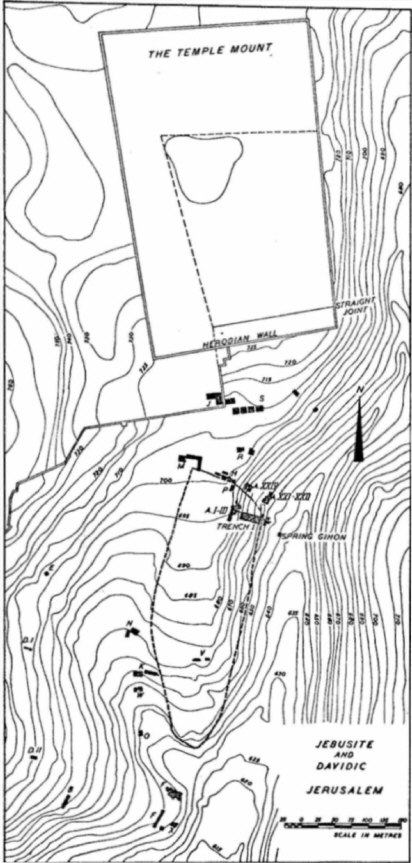New Light On David’s Capture Of Jerusalem -- By: Bryant G. Wood
Journal: Bible and Spade (First Run)
Volume: BSP 01:4 (Autumn 1972)
Article: New Light On David’s Capture Of Jerusalem
Author: Bryant G. Wood
BSP 1:4 (Autumn 1972) p. 99
New Light On David’s Capture Of Jerusalem
After the death of Saul, Israel’s first king, the people of Israel and Judah united under David at Hebron (II Samuel 5:1–5). David’s first act as leader of the newly formed federation was to establish a new capital. He chose a neutral city, Jerusalem, which lay on the border between the northern and southern tribes and was occupied by the Jebusites. David captured Jerusalem in about 996 B.C. as described in II Samuel 5:6–10:
“And the king and his men went to Jerusalem unto the Jebusites, the inhabitants of the land: which spake unto David, saying, Except thou take away the blind and the lame, thou shalt not come in hither: thinking, David cannot come in hither. Nevertheless David took the stronghold of Zion: the same is the city of David. And David said on that day. Whosoever getteth up to the gutter, and smiteth the Jebusites, and the lame and the blind, that are hated of David’s soul, he shall be chief and captain. Wherefore they said, The blind and the lame shall not come into the house. So David dwelt in the fort, and called it the city of David. And David built round about from Millo and inward. And David went on, and grew great, and the Lord God of hosts was with him.”
Archaeological excavations at Jerusalem between 1961 and 1967 have given us much new information about the city of Jerusalem — especially the Jerusalem of David’s time. The dig was under the direction of Dr. Kathleen Kenyon of the British School of Archaeology. The results of the excavations have been published in Dr. Kenyon’s latest book, ROYAL CITIES OF THE OLD TESTAMENT (Barrie and Jenkins, London, 1971).
Jerusalem’s Walls
The Jebusite city captured by David was situated on the Hill of Ophel, south of present-day Jerusalem. Kenyon’s team found that its walls formed an elongated triangle enclosing an area of approximately 11 acres (see figure on page 100). The city was divided into two areas: a narrow summit plateau, about 100 yards across at its widest point and, to the east, a steep slope going down to the Kedron Valley. This peculiar arrangement was necessitated by the location of the city water supply, Spring Gihon.
BSP 1:4 (Autumn 1972) p. 100

BSP 1:4 (Autumn 1972) p. 101
Spring Gihon is located in the Kedron Valley. Defensively, it was advantageous to build the city on top of the Hill of Ophel, but this would leave the spring inaccessible during time of war. On the other hand, the eastern wall could not be located in the valley, so as...
Click here to subscribe
